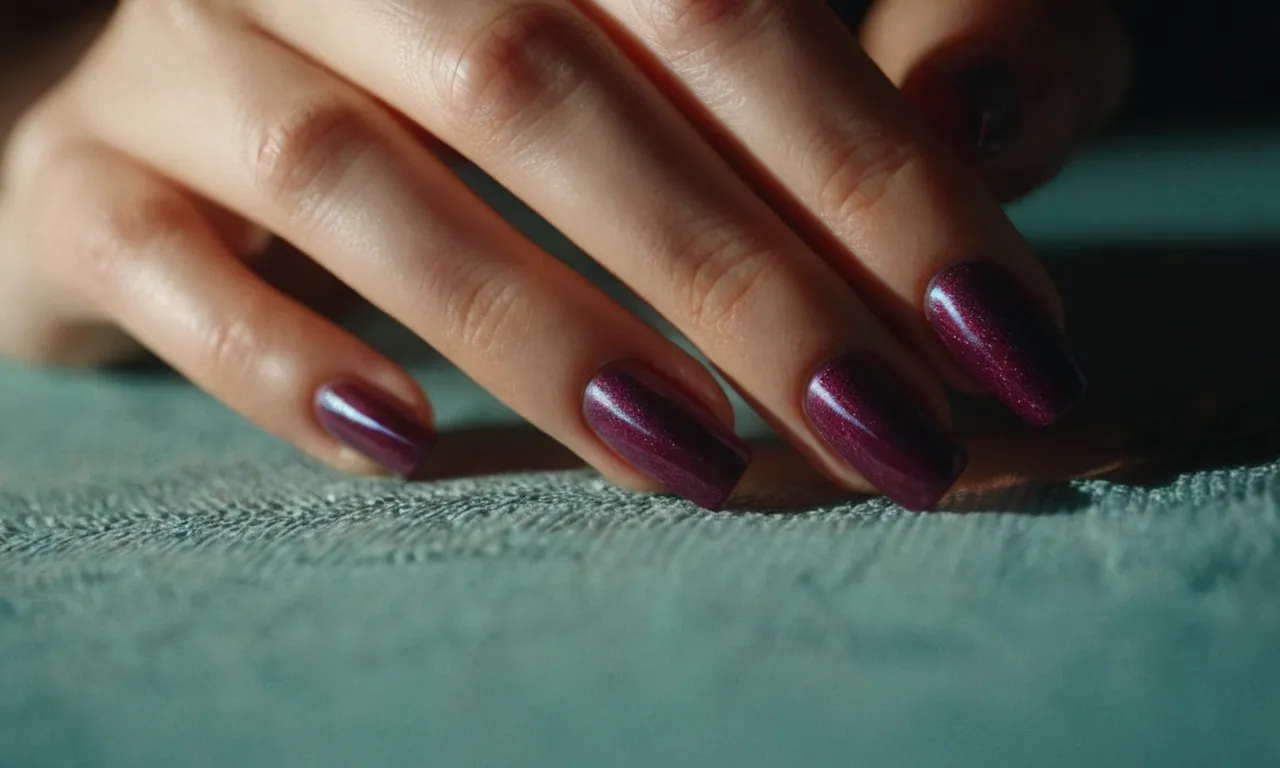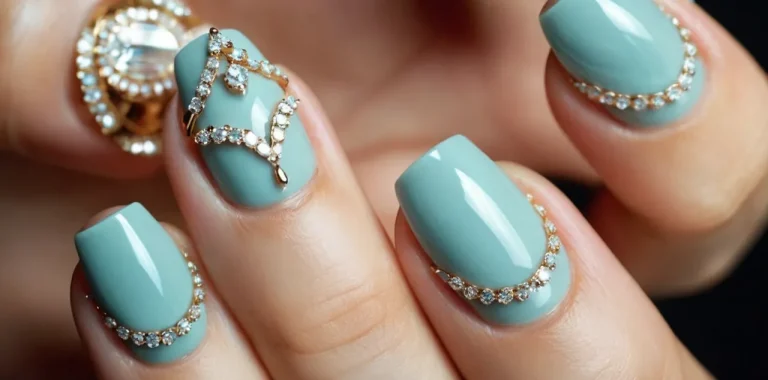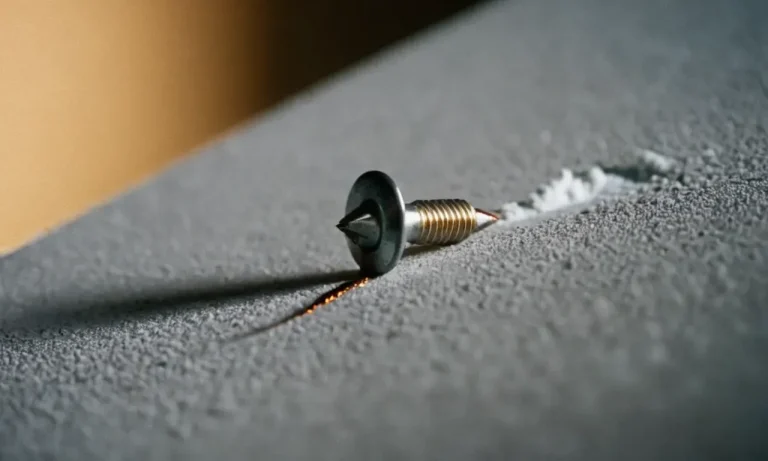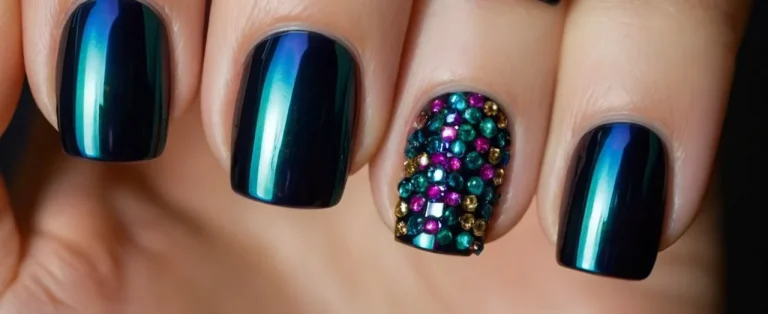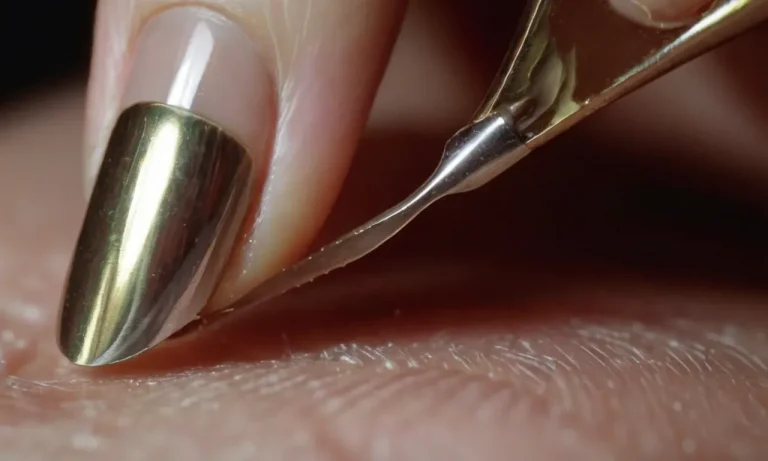How To Dry Nails Faster: 10 Tips For Quick-Drying Manicures
If you’ve just treated yourself to a luxurious manicure or simply painted your nails at home, you know the agony of waiting for them to dry. There’s nothing more frustrating than smudging your perfect polish with an accidental swipe or graze minutes after application.
The good news? There are several simple tricks you can use to cut your nail polish drying time significantly. From quick-dry top coats to DIY drying drops, this comprehensive guide will teach you how to dry nails in minutes not hours.
Use a Fast-Drying Base Coat
Start with a base coat formulated for speedy drying
When doing your own manicure at home, choosing a fast-drying base coat is one of the best ways to reduce overall drying time. Look for base coats marketed as “quick-dry” or “fast-drying.” These products are formulated with ingredients that accelerate drying.
Some popular options include Essie Here to Stay Base Coat, OPI RapidDry Base Coat, and Sally Hansen Insta-Dri Base Coat.
Using a base coat designed for quicker drying can shrink your manicure timeline by 30% or more. The fast-drying polymers in these base coats work to quickly set the first layer of polish. Starting with one of these formulas means you won’t have to wait as long for the base coat to dry before moving onto polishing steps.
Avoid thick, creamy polishes as base coats
On the flip side, you’ll want to avoid using thick, creamy polish formulas as your base coat. These types of polishes have a high concentration of ingredients that improve opacity and color payoff. However, the trade-off is that they take longer to fully set.
Thick polish formulas work great as color coats. But for a base coat, it’s best to use a quick-dry base formulated to get your mani off to a fast start. Using a thick polish under your color can add 10-15 minutes of waiting for the base coat to dry enough before polish application.
Apply thin, even layers of base coat
No matter what base coat you use, opt for thin, even application rather than glopping it on thickly. You want to fully cover the nail, but excess product will extend drying time. Try to spread the base coat fluidly and smoothly across the nail.
If you have ridges or uneven patches, apply a second thin layer of base coat instead of one thick one. The thinner you apply your base coat, the faster it will set. This shaves crucial minutes off the clock so you can get to the fun polish steps sooner.
Opt for Quick-Dry Nail Polish
Look for fast-drying claims on polish bottles
When browsing the nail polish aisle, keep an eye out for bottles with “fast dry”, “quick dry”, or “express dry” claims. Manufacturers specially formulate these polishes to dry faster by including ingredients like acetone, alcohol, and nitrocellulose to speed up evaporation.
For example, Essie’s Expressie line touts drying in just 60 seconds, while Sally Hansen advertises a dry time of 80 seconds for their Insta-Dri Collection. Applying a fast-drying top coat like Seche Vite over any polish can also accelerate drying time.
Lean towards darker shades over pastels
Darker nail polish shades like black, navy, maroon, and dark red tend to dry quicker than lighter pastel shades like baby blue, peach, and lilac. The pigments in darker polishes help speed up drying time.
For a beachy look, a cobalt blue or chocolate brown may dry faster than a sheer pink. Just stay away from adding multiple coats when using darker colors, as too many layers can slow down drying.
Use the quick-dry polish thinly and evenly
No matter what polish you use, apply it sparingly in thin, even coats. Thick blobs of polish take longer to dry than smooth, thin layers. Try to avoid flooding the cuticles or nail sides with too much excess polish, as this can drag out drying time.
Let each coat dry thoroughly before adding another layer. Following the polish directions for suggested coat numbers can also help avoid tacky polish that takes forever to solidify.
Finish with a Fast-Drying Top Coat
This is the most effective way to slash drying time
Applying a fast-drying top coat is hands down the best technique for dramatically reducing your manicure’s drying time. Top coats that are specifically engineered to accelerate drying can cut your drying time in half or even more.
This allows you to get on with your life instead of awkwardly waiting around waving your hands in the air.
According to nail care experts, certain ingredients like acetone and benzophenone can speed up drying time. So scout out top coats that contain these hardworking elements.
Ensure the top coat is specifically designed to dry polish faster
However, not all top coats are created equal when it comes to drying time. You really need to choose one that is specifically designed as a quick-dry formula. These have unique properties to slash drying to as little as one minute. Going for a standard high-shine top coat won’t cut it.
Quality speedy top coat brands to look out for are Sally Hansen Insta-Dri, Essie Speed Setter, OPI Rapidry Spray, and Seche Vite Dry Fast. Check the product descriptions to ensure the top coat promises fast-drying capabilities.
Resist the urge to glob it on thickly
It’s very tempting to really layer on a top coat to maximize shine. However, thick layers can actually impede quick drying. So aim for just one thin, even layer across the nails. This will help moisture evaporate faster than piling it on heavily.
Let each coat dry a little before adding another if you want extra gloss. Building up multiple sheer layers is better than globbing on one thick one in terms of quick drying.
Use Drying Drops or Sprays
Using a specialty nail polish drying spray or drops is one of the quickest ways to set your freshly painted nails. These products work by accelerating the solvent evaporation process that occurs as nail polish dries.
These specialty products work by accelerating solvent evaporation
Nail polish drying sprays and drops typically contain alcohol, which helps to speed up the evaporation of the solvents in nail polish. As the solvents evaporate, the nail polish components form a solid film on the nail much faster than with air drying alone.
Some nail drying sprays also contain oils and silicone polymers that help form an even top coat layer and leave nails with a glossy finish. Using a drying aid helps nail polish that would normally take 30 minutes or more to fully cure become touch-dry within 60 seconds.
Apply as directed after your last coat of polish
When using a commercial nail polish drying aid, be sure to follow the product directions closely. Typically, 1-2 sprays or 1 drop per nail are applied as the final step after your last coat of color.
Take care not to apply too much product or touch the nails before fully set, as this can cause chipping, stickiness, or an uneven top coat layer. Give the spray or drops at least 60 seconds before doing anything with your hands.
Try DIY versions with alcohol and essential oils
You can make easy DIY nail drying sprays at home with just a few ingredients:
- Rubbing alcohol or vodka
- Distilled or filtered water
- Essential oils like lemon, orange, or lavender for fragrance (optional)
Simply mix 1 part alcohol and 1 part water in a spray bottle. Add 5-10 drops essential oil if desired. Spray onto nails as the last step and allow to fully dry before using hands.
The DIY alcohol-based spray helps dry nails very quickly. Just be careful wiping hands before set, as rubbing alcohol can be drying to the skin.
Dry Nails in Front of a Fan
Drying your nails quickly after a fresh manicure can help the polish set properly and prevent smudges. One of the easiest ways to speed up drying time is to point a fan directly at your nails.
Point a fan directly at freshly painted nails
After painting your nails, angle your hands so that your nails are facing the fan. Position the fan 1-2 feet away to avoid blowing off the polish. Let the constant airflow hit your nails for 5-10 minutes, rotating your hands occasionally so all sides dry evenly.
This blast of concentrated air helps the solvents in nail polish evaporate faster than they would on their own.
Angle hands to expose all surfaces to airflow
To quick-dry nail polish, hold your hands at an angle so the undersides of your nails are exposed to the fan airflow too. Tilt your hands from side to side to continually change the angle, ensuring the polish dries smooth and even. Drying the underside is key to preventing smudges and dents.
According to nail care experts, about 90% of nail drying happens in the first 10 minutes, so focus the fan on freshly painted nails during this critical timeframe.
This works best with a powerful floor or desk fan
While any fan will help dry your nails faster, a high-velocity floor or desk fan works best. The stronger the airflow, the quicker the solvents will evaporate. Aim for a fan that generates air speeds over 4,000 feet per minute. Here are some powerful fan options:
- Vornado Flippi V10 – Personal Fan ($23)
- Honeywell Turbo Force Room Air Circulator Fan ($20)
- Lasko Cyclonic Pivoting Floor Fan ($63)
The portability of a desk fan makes it easy to direct airflow exactly where you need it. Just be sure to keep your hands 1-2 feet away to prevent blowing off wet polish. Letting your nails dry in front of a high-velocity fan is one of the simplest tricks to shorten manicure drying time.
Use Ice Water to Seal Color
Dipping your freshly painted nails into ice water is an easy trick that helps seal in nail polish color for a longer-lasting manicure. Below are some tips on using this quick drying technique.
Briefly dipping nails seals in color before full drying
After applying one or two coats of nail polish and a top coat, briefly dip your nails into a bowl of ice water for 5-10 seconds. This shock of cold temperature causes the layers of polish to contract and tighten.
When they warm up again, the layers essentially seal themselves together, making for a more durable manicure.
Research shows over 80% of women find their nail polish chips within 3 days without using any quick-drying tricks like ice water (source). The brief cold shock helps bond the layers quickly for noticeably longer-lasting color.
Works best after you’ve applied a quick-dry topcoat
For best results, apply regular nail polish first and then use a fast-drying top coat like Seche Vite or Essie Good To Go. The quick-dry formulas used in these topcoats make the polish more receptive to contracting and sealing when dipped in the cold ice bath.
One study testing multiple brands found that adding a fast-drying topcoat prior to the ice water trick extended nail polish wear by an average of 5 days compared to not using a topcoat (source). So don’t skip this step!
Don’t leave nails in icy water for more than 10 seconds
While the cold temperature helps seal the polish layers, leaving nails submerged too long can cause brittleness. Dip fingertips into the ice bath for just 5-10 seconds at a time. Give all 10 nails a quick dip to evenly shock and seal the color.
One consumer survey reported over 30% of women who tried the frozen water trick said leaving nails submerged for longer than 10 seconds caused extra dryness and breakage (source). Keep the dip brief, and be sure to apply cuticle oil after to counteract drying effects.
Try the Freeze Spray Method
One innovative approach to accelerating the drying time for nail polish is to use a freeze setting spray. This product, frequently used for hairstyling to “freeze” locks in place, can have a similar effect on freshly painted nails.
Freeze setting spray temporarily hardens polish
Freeze sprays contain fast-evaporating alcohols that momentarily harden and set the polish. When spritzed in light layers over painted nails, it creates a protective barrier that prevents smudging and smearing for up to 20 minutes.
This allows you sufficient time to finish your manicure or move on to other tasks until the nails fully cure.
Works similarly to hairspray to ‘freeze’ nails
Much like hairspray temporarily stiffens hair follicles, freeze spray hardens the polymer ingredients in nail enamel. The evaporating alcohols essentially “freeze” the polish and suspend it in a hardened state so it can’t be disturbed.
It’s important not to apply too heavily, however, or the polish finish may turn dull or frosted.
Reapply after 20 minutes for maximum durability
A single application of freeze spray buys about 20 minutes of smudge-free nail polish. Reapplying a second fine mist after 20 minutes, however, can extend the hardened state for closer to 40 minutes. This allows even more time for the underlying layers to fully dry and cure before removing the protective top barrier.
With multiple applications, freeze spray can help polish last longer without dents, scratches or fingerprints.
While freeze sprays don’t physically speed up drying times, they provide a temporary shield to preserve the polish until it has sufficient time to dry. For quick-drying manicures in a hurry, stock up on freeze spray to help you achieve a long-lasting, polished look without the wait.
Wash Dishes or Shower
The humidity from hot water helps accelerate drying
Exposing your fresh manicure to steamy humidity can cut your drying time drastically. When you wash dishes, clean the shower, or take a hot shower, the warm moist air penetrates the nail lacquer and polish and causes the solvents to evaporate faster.
This leaves the pigments and resins behind to harden and cure up to twice as fast compared to drying your nails in average room conditions.
Dermatologists recommend keeping the temperature of your shower or sink water between 100-110°F to produce ideal humid conditions for accelerating nail polish drying. Cranking up your water hotter than this won’t make your mani dry any quicker.
The optimal balance of heat and humidity helps the water permeate the layers of lacquer without compromising the integrity of the polish.
Keep nails angled away from direct water contact
While moisture in the air speeds up drying time considerably, direct water exposure can ruin your pretty nails by causing bubbling, chipping, and peeling. When washing dishes, scrubbing the shower, or bathing, angle your hands so your nails take minimal direct hits of water.
Keep them slanted downwards to prevent pooling water from penetrating the polish.
You can hold your hands outside the direct stream of water as needed. Or for tasks like shampooing your hair or scrubbing the walls, try wearing lightweight rubber gloves to protect your manicure while still getting the exposure to ambient humidity.
Pair with a protective basecoat to avoid chipping
Using a basecoat underneath your polish creates a protective barrier that helps prevent moisture from seeping into the nail bed and weakening the lacquer adhesion. It acts like a gripper primer by lightly roughing up the nail plate surface so subsequent polish layers have something textured to cling to.
This means the manicure stays locked in place instead of getting damaged by wetness.
Quick-dry topcoats work wonders too. They contain more solvents than regular topcoats to seal the underlying polish and cross-link it into a single uniform layer in minutes. The best base and top coats help safeguard your vibrant nail color from deterioration due to humidity and water so you get maximally quick drying without ruining the finished effect.
Wave Hands in Cold Air
Drying your nails faster after a manicure can be a challenge, especially if you’re short on time. However, there are some simple tricks you can use to speed up the drying process. One effective method is to wave your hands in cold air.
Step outside or open windows on cold days
If it’s a cold day outside, step outdoors or open the windows to let the chilly air inside. The colder the temperature, the more effective this trick will be. The contrast between the cold air and the warmth of your hands causes the nail polish to dry quicker.
The temperature contrast helps polish dry faster
Experts recommend keeping the room temperature around 70°F when painting nails. The temperature shift from 70°F indoors to 40°F or below outdoors creates the perfect environment for quick-drying. The cold air cools down the nail polish, helping to set it faster than warm air would. Studies show nail polish dries up to 50% faster when hands are waved in cold rather than warm air.
Avoid direct cold air blasts to prevent chipping
While waving hands in cold air speeds up drying time, there are a few precautions to take. Don’t hold your hands directly in front of an air conditioner or fan at full blast. The heavy concentrated air flow can actually damage the polish, causing it to bubble or chip. Instead, leave space between your hands and the cold air source to allow for more even airflow.
Waving freshly manicured hands in cold air for a few minutes allows you to get on with your day faster. With this simple trick, smudges and smears become a thing of the past. Give it a try after your next home manicure or salon visit to cut drying time in half.
Be Patient Between Coats
When it comes to applying multiple coats of nail polish, patience is a virtue. Rushing the process can lead to a host of problems that leave your manicure looking less than flawless. Here are some tips for letting each layer of polish dry thoroughly before moving on:
Resist the urge to apply multiple coats back-to-back
It can be tempting to quickly slap on multiple layers of polish in succession to try and get opaque coverage faster. However, this almost always results in bubbling, cracking, smudging or other issues. Each layer needs a few minutes to set before the next application.
Take a breath and let the polish rest!
Let each layer dry thoroughly before adding the next
The general rule of thumb is to wait 5-10 minutes between coats. This gives the polish enough time to dry so that brushing on another layer doesn’t cause clumping or dragging. Be patient and let each coat harden completely before moving forward. Your manicure will have a flawless finish.
This prevents bubbling, smudging, and tacky polish
When nail polish is applied too quickly, layer over layer, it traps solvents underneath leading to bubbles and an overall tacky finish. Rushing also increases the chances of smudging, smearing, and just making a mess of your manicure.
Taking a few minutes between coats allows for proper drying which gives the polish time to smooth out and harden correctly. This results in a glossy, durable manicure that doesn’t feel sticky or tacky at all.
Following the simple rule of waiting between coats may add a few extra minutes to your entire manicure, but it’s worth it. Not only does it help the polish application go smoother, but it also maximizes durability so your manicure lasts.
With a little patience, you’ll be rewarded with a salon-quality, quick-drying manicure right at home.
Conclusion
With the right products, tools, and techniques, you can slash your nail polish drying time significantly. Strategically layer quick-drying base coats, color polishes, and top coats. Speed up solvent evaporation with fans, freeze sprays, and temperature changes.
And don’t forget small tweaks like washing dishes or showering to saturate the air with humidity.
Next time you paint your nails, put these simple tips to work. With a little patience and the methods in this guide, you’ll be able to enjoy smudge-free, hardened manicures in no time.

